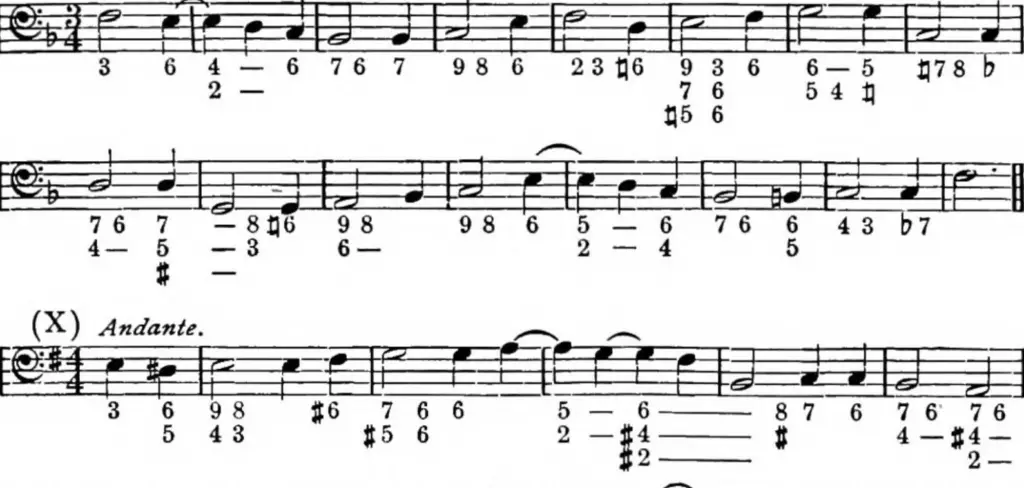Music is full of unique tempo markings that guide musicians in expressing emotions, and one of the most well-known is andante. It means “moderately slow” or “at a walking pace”, allowing a composition to flow naturally, like a steady and even-paced movement. Unlike rigid speeds, andante invites a touch of interpretation, making it a measured yet lyrical experience.
Musicians often describe andante as easy-going, giving them the freedom to shape a piece with a sense of tranquility and thoughtful expression. Whether you’re playing a classical symphony or a soft melody, this tempo brings a calm, flowing character that suits a variety of moods and styles.
How Fast Is Andante?
Since andante means “at a walking pace”, its actual speed can be subjective. Different musicians may interpret this differently, but it generally feels steady and controlled, without rushing or dragging.
To define it more clearly, musicians use a metronome, which gives a precise beats per minute (BPM) range. For andante, the typical range is between 76 and 108 BPM, ensuring a moderate and flowing rhythm while still allowing room for expression.
Even within this range, interpretation matters. A pianist might play an andante passage slightly slower to enhance lyrical phrasing, while an orchestra might move it slightly quicker to maintain energy and balance. The key is to find a natural, unforced flow.
Historical Context and Etymology of Andante
The word andante comes from the Italian word “andare”, meaning “to go” or “walking”. This definition perfectly captures the tempo’s essence—it’s not hurried, yet it moves forward with a measured, graceful pace.
The use of andante in music began around the mid-1700s, a time when composers sought a balance between expressive melodies and structured compositions. It was particularly popular during the Classical era, where clarity and emotional depth were highly valued.
Famous composers like Mozart, Haydn, and Beethoven frequently used andante to create a sense of gentle warmth, thoughtful introspection, and expressive motion. It became more than just a tempo marking—it represented an entire musical philosophy of clarity and balance.
Related Terms to Andante
Several tempo markings are closely linked to andante, each offering subtle variations in speed and character. These terms help musicians understand how to shape a piece while maintaining a moderate tempo.
- Andantino is either slightly faster or slower than Andante, often giving a lighter, graceful feel.
- Andante moderato sits between andante and moderato, making it a comfortable yet relaxed pace.
- Andante con moto adds motion to the tempo, making it more lively but still measured.
- Andante sostenuto suggests a sustained andante, where notes are played with a lingering, prolonged quality.
- Andante tranquillo blends the steady movement of andante with a serene, calm atmosphere.
- Andante maestoso adds grandeur and dignity, creating a stately walking pace.
- Andante cantabile emphasizes a singable, flowing melody, often lyrical and expressive.
- Andante grazioso brings a gentle elegance, focusing on delicacy and finesse.
- Andante espressivo enhances expressiveness, allowing deeper emotional interpretation.
- Andante allegretto combines elements of andante and allegretto, offering a relaxed yet slightly lively mood.
Each of these tempo indications helps musicians bring out the right character and emotion in a piece.
Examples of Andante in Music
Many famous compositions showcase andante, each highlighting its unique ability to create a balanced, expressive mood. Some of the best examples include:
- Beethoven’s Symphony No. 6 in F Major (“Pastoral”) – 2nd Movement: Marked “Andante molto moto”, this movement beautifully captures the tranquil flow of a brook, reflecting Beethoven’s deep love for nature.
- Mozart’s Piano Concerto No. 21 in C Major, K. 467 – 2nd Movement: Often called the “Elvira Madigan” concerto, this piece is a perfect example of andante’s lyrical and heartfelt melodies.
- Schubert’s String Quartet No. 14 in D Minor (“Death and the Maiden”) – 2nd Movement: The andante con moto movement adds a haunting yet beautiful atmosphere, reflecting deep emotion and intensity.
- Mozart’s Symphony No. 40 in G Minor, K. 550 – 2nd Movement: This andante section showcases complex emotions, moving between introspection and subtle drama.
Each of these compositions demonstrates how andante can shape a piece’s flow, emotion, and storytelling, making it one of the most versatile tempo markings in music.
Final Thoughts
Understanding andante helps musicians interpret music with grace, balance, and expression. Whether played on a piano, violin, or full orchestra, this tempo allows for a steady yet flexible pace, making it a favorite among composers and performers.
Next time you listen to or play a piece marked andante, pay attention to its measured movement, lyrical quality, and expressive character. It’s a reminder that music, like life, is best enjoyed at a steady, thoughtful pace.
You can also check out B-Flat Major Scale: An Easy Guide and D Major Scale: An exclusive Guide.
Adam Smith is the Founder, writer, and news publisher of GetMuzeek, where he shares the latest updates, insights, and stories from the world of music. With a passion for uncovering fresh trends and delivering engaging content, Adam keeps readers informed and inspired.
